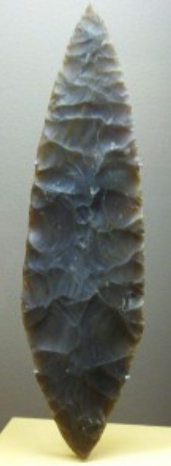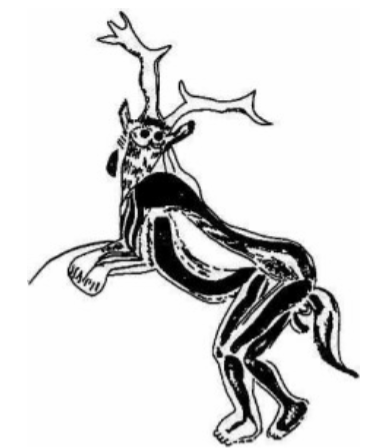11.4: Humans - Homo sapiens
- Page ID
- 62359
\( \newcommand{\vecs}[1]{\overset { \scriptstyle \rightharpoonup} {\mathbf{#1}} } \)
\( \newcommand{\vecd}[1]{\overset{-\!-\!\rightharpoonup}{\vphantom{a}\smash {#1}}} \)
\( \newcommand{\id}{\mathrm{id}}\) \( \newcommand{\Span}{\mathrm{span}}\)
( \newcommand{\kernel}{\mathrm{null}\,}\) \( \newcommand{\range}{\mathrm{range}\,}\)
\( \newcommand{\RealPart}{\mathrm{Re}}\) \( \newcommand{\ImaginaryPart}{\mathrm{Im}}\)
\( \newcommand{\Argument}{\mathrm{Arg}}\) \( \newcommand{\norm}[1]{\| #1 \|}\)
\( \newcommand{\inner}[2]{\langle #1, #2 \rangle}\)
\( \newcommand{\Span}{\mathrm{span}}\)
\( \newcommand{\id}{\mathrm{id}}\)
\( \newcommand{\Span}{\mathrm{span}}\)
\( \newcommand{\kernel}{\mathrm{null}\,}\)
\( \newcommand{\range}{\mathrm{range}\,}\)
\( \newcommand{\RealPart}{\mathrm{Re}}\)
\( \newcommand{\ImaginaryPart}{\mathrm{Im}}\)
\( \newcommand{\Argument}{\mathrm{Arg}}\)
\( \newcommand{\norm}[1]{\| #1 \|}\)
\( \newcommand{\inner}[2]{\langle #1, #2 \rangle}\)
\( \newcommand{\Span}{\mathrm{span}}\) \( \newcommand{\AA}{\unicode[.8,0]{x212B}}\)
\( \newcommand{\vectorA}[1]{\vec{#1}} % arrow\)
\( \newcommand{\vectorAt}[1]{\vec{\text{#1}}} % arrow\)
\( \newcommand{\vectorB}[1]{\overset { \scriptstyle \rightharpoonup} {\mathbf{#1}} } \)
\( \newcommand{\vectorC}[1]{\textbf{#1}} \)
\( \newcommand{\vectorD}[1]{\overrightarrow{#1}} \)
\( \newcommand{\vectorDt}[1]{\overrightarrow{\text{#1}}} \)
\( \newcommand{\vectE}[1]{\overset{-\!-\!\rightharpoonup}{\vphantom{a}\smash{\mathbf {#1}}}} \)
\( \newcommand{\vecs}[1]{\overset { \scriptstyle \rightharpoonup} {\mathbf{#1}} } \)
\( \newcommand{\vecd}[1]{\overset{-\!-\!\rightharpoonup}{\vphantom{a}\smash {#1}}} \)
Recap: Depending on which model people embrace for explaining the origin of our own species, one or more of those species would have evolved into archaic or premodern humans and, subsequently, anatomically modern humans (AMH), i.e., Homo sapiens sapiens. The Regional Continuity or Multiregional Model (RCMB) supposes that whatever erectus forms were present in the various locations evolved through a premodern form, often termed Archaic Homo sapiens whether Neanderthal-like or otherwise, and then into AMH via gene flow between the populations.
The “Recent African Origin” (RAO) or Replacement theory holds that our ancestors arose in Africa ~200 kya and then moved out to populate the rest of the world, those “erectus” species that did not contribute to our lineage went extinct. The problem remains as to which of the later “erectus” forms gave rise to our premodern form, Homo heidelbergensis. At this point in time, the most plausible is the Assimilation Model that says there was interbreeding between species (such as Neanderthals and humans), but also that Homo sapiens may have out-competed and/or wiped out other hominins as they migrated.
We refer to modern humans as Anatomically Modern Humans (AMH), to distinguish them from the Archaic species. The origin of our species is thought to have occurred in Africa sometime prior to 200 kya, based on fossil and genetic evidence.
Groups of AMH made one or more exoduses out of Africa during the Late Pleistocene. The ancestors of some Southeast Asians and the earliest Australians (as well as inhabitants of surrounding islands and those that were used as “stepping stones”) may have left Africa ~125 kya. There are sites dating to ~120 kya in the Middle East. A later group left prior to 50 kya and populated Eurasia and the New World, and made their way to the South Pacific as well, where they must have come into contact and interbred with the previously existing humans there.
The AMH ancestors of Eurasians interbred with neandertals, so that living descendants have inherited an average of 2.5% of neandertal genes. Some Southeast Australasians inherited both neandertal and Denisovan genes, due to interbreeding, and they carry ~7% of genes from those two species.

The earliest date for AMH in Eurasia is from the Ordos site in Mongolia at 50 kya. AMH reached Western Europe by 35 kya. Sites are found in Germany, France, Italy, and Spain, with the best-known site being the Cro-Magnon site in Les Ezies, France. The Cro-Magnon site gave the name to the earliest people of Western Europe and is the location where the “Old Man of Cro-Magnon” (see Figure) was found in 1868 by Louis Lartet.
By 15 kya, humans had spread throughout the world. They reached the New World, either by rafting along the shoreline from Asia during extremely low sea levels that characterized the last glacial maximum (~17 kya) or by crossing the Bering Land Bridge at a later point in time. Dates in South America (~14 kya) are older than those in North America and represent the former mode of travel. Sea levels dropped by as much as 120 m during that time. Crossing Beringea involved traveling between two ice shields and was likely a difficult undertaking.

Anatomy
AMH skulls were more vertically oriented with thinner bones. While the cranial capacity (mean = 1450 cc) was lower relative to neandertals, the brain was architecturally different, and corresponding behavior was more complex and indicative of greater lateralization. The parietal and frontal lobes were expanded, resulting in high maximum width and breadth and a more pronounced forehead. Those areas of the cerebrum are involved with higher thought-processing skills related to association, speech, and all of the other cognitive capabilities that make us unique relative to other species, past and present.
The face was shorter, the orbits were more rectangular, and the brow ridges were less pronounced. Jaw and dental robusticity became further reduced. AMH are characterized by a chin, or mental eminence (an autapomorphic, or unique, trait in AMH).
Postcranially, AMH exhibited narrow hips, long legs, and thinner long bones than H. heidelbergensis or neanderthalensis. While they were seemingly not as cold-adapted as neandertals, they moved into northern latitudes and survived through the last glacial maximum. It is strange that the seemingly more heat-adapted humans survived and the robust neandertals did not. However, their long legs and more gracile morphology were less energetically costly and afforded them greater endurance and a longer stride and hence greater speed. In addition, cultural adaptations to the climate must have occurred or they could not have survived. They are thought to have made better clothes, shelter, and weaponry and were skilled hunters.
Culture/Behavior
Until the advent of agriculture and the beginning of the modern geological epoch (i.e., the Holocene) approximately 10 kya, humans were mobile to semi-sedentary foragers. They exploited whatever flora and fauna were native and available in the various regions they inhabited and colonized, from mastodons in the far north to wallabies in the far south of the Old World.
We certainly know that early humans had spoken language, and it would have facilitated their survival via group memory and tradition as well as problem-solving. They were qualitatively different than the neandertals, and their modes of communication were likely more advanced. Modern languages can be traced, showing their spread and evolution over time and geographic space. Some of the symbols that have survived from Paleolithic times, such as dots, dashes, and hand-prints, may have conveyed information. The same may be said for depictions of animals, humans, and hunting on cave walls.
Early AMH culture falls within the period termed the Upper Paleolithic (40–12 kya). Relative to prior Middle Paleolithic sites, AMH cultural achievements are much more impressive. Over time, they made great technological advances, inventing a great variety of new and useful objects and modes of production. People left Africa armed with language, religion, and cultural identity, as they are cultural universals and there is some evidence in the archaeological record that suggests religious practices and initiation rituals (see below).
Greater individual expression is apparent in the wonderful representational art that has survived in cave paintings and sculptures, and body adornment in the form of clothing, jewelry, and pigmentation. Complex aspects of culture, such as rules regarding kinship and marriage, also may have preceded the African diaspora(s). They too are cultural universals, and while they likely changed over time in response to need and ecology, they certainly did not evolve independently in all places.
According to Stringer and Andrews (2005), cultural achievements in the various regions of the Old World were as follows:
- Europe ~40 kya:
- All aspects of Upper Paleolithic culture.
- Only early representational art.
- South Africa ~75 kya:
- Blombos Cave.
- Carved and decorated ocher crayons.
- Australia ~30 kya:
- Rafts.
- Cremation.
- Art.
- Body adornment.
- Bone artifacts.

Tools
Upper Paleolithic tool industries were advanced relative to past traditions, with greater diversification and refinement. Tools consisted of knives, scrapers, chisels, borers, awls, needles, and a greater number of blade and compound tools. Stone, bone, ivory, and antler were used. Like the Levallois technique and the Mousterian industry, AMH could produce a variety of tools from a single core, but they used a new mode of production known as the punch technique. It involved using a hammerstone, a hammer and chisel, or a long wooden spear (using upper body weight and strength) to “punch” blades from the core. A method known as pressure flaking was used to finely and bifacially shape the blade. Pressure flaking involves the use of a pointed tool, such as antler or bone, to force tiny flakes from the surface and edges of the tool.

Finally, the Magdalenian industry is characterized by great advances in weaponry, such as the bow and arrow and the atlatl or spear thrower, both of which allowed hunters to put distance between themselves and their prey. These projectile tools may have given AMH a huge advancement to outhunt other hominins.
Other weapons from the Upper Paleolithic are stone missiles or bolas, boomerangs, spears, javelins, and clubs. AMH had refined fishing techniques, rafts, and canoes. Harpoons appear very early in the archaeological record, e.g. the Katanda site in the Democratic Republic of Congo is dated to 180–75 kya. They also constructed traps, rope, and baskets.

Beginning ~25 kya, a cultural and symbolic explosion is evident in the archaeological record of Western Europe, possibly in response to the increasingly cold temperatures, such as if they spent more time inside caves or were performing rituals aimed at increasing their survival. The Cro-Magnon/ Aurignacian people are known for their cave art and sculptures (see Figure). The Figure illustrates the incredible number of sites where early AMH art has been found. There are 150 sites in southwest France alone.
Common cave art themes are fauna; hunting; hands; dots and lines; some humans; and the occasional human costumed as an animal and sometimes dancing, such as “The Sorcerer” (see Figures). Men appear alone or in groups, but women are never pictured alone. Drawings of male and female genitalia are reported from multiple sites.


A famous Spanish cave site is Altamira (15 kya) (see Figure below). The cave is about one kilometer long (Chivers, 2004) and contains polychromatic renderings of large mammals, especially bison, and human hand prints.

AMH invented pottery, with the earliest evidence being fired-clay animals from the Czech Republic. The most famous sculptures are the Venus figurines (i.e. fertility goddesses) that have been found from Western Europe to Siberia. They are usually clay or stone depictions (also wood, bone, and ivory) of obese women with pronounced breasts and buttocks. They were originally thought to have been produced by men for fertility purposes.

A more recent interpretation is that they were self-sculptures by women. That may explain why they were usually faceless and why body parts closest to the eyes were large and disproportionate compared with their tiny feet. Another idea suggests their use as obstetrical aids. Other sculptures were created via bas-relief on walls and rocks, which involves carving some dimensionality into the façade (see the Venus of Laussel, Figure), and there were also engraved tools, jewelry, and so forth.

